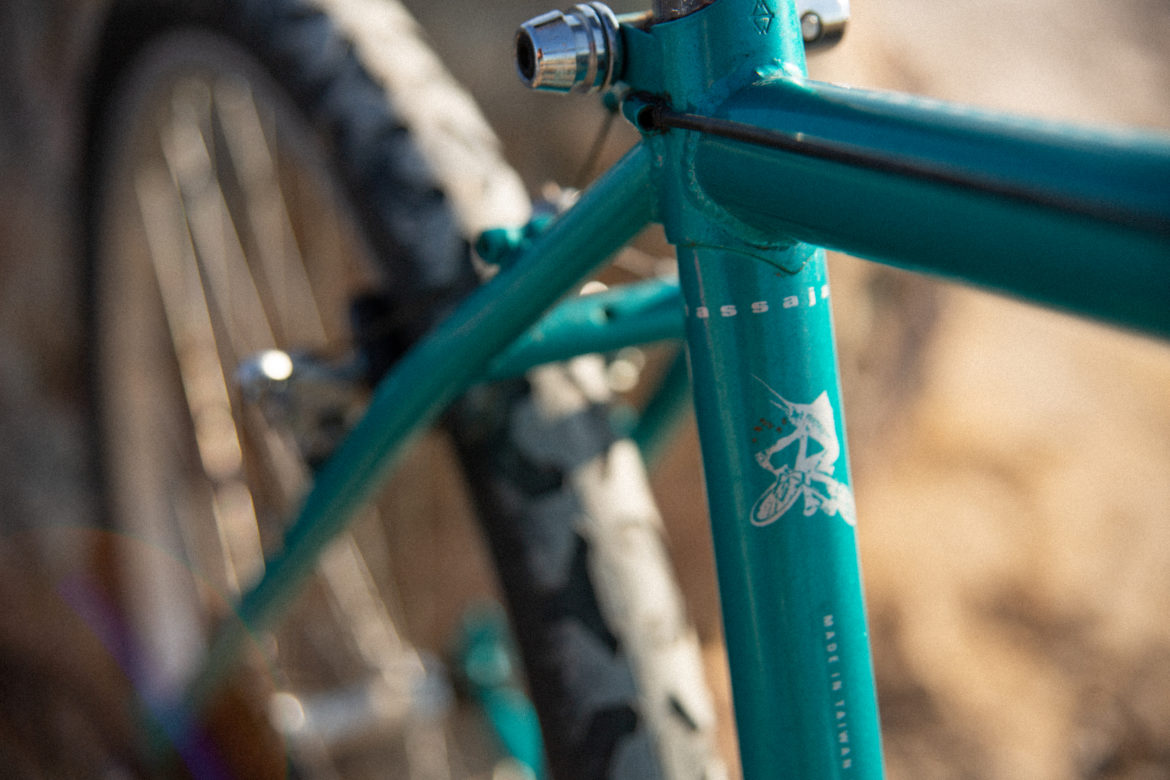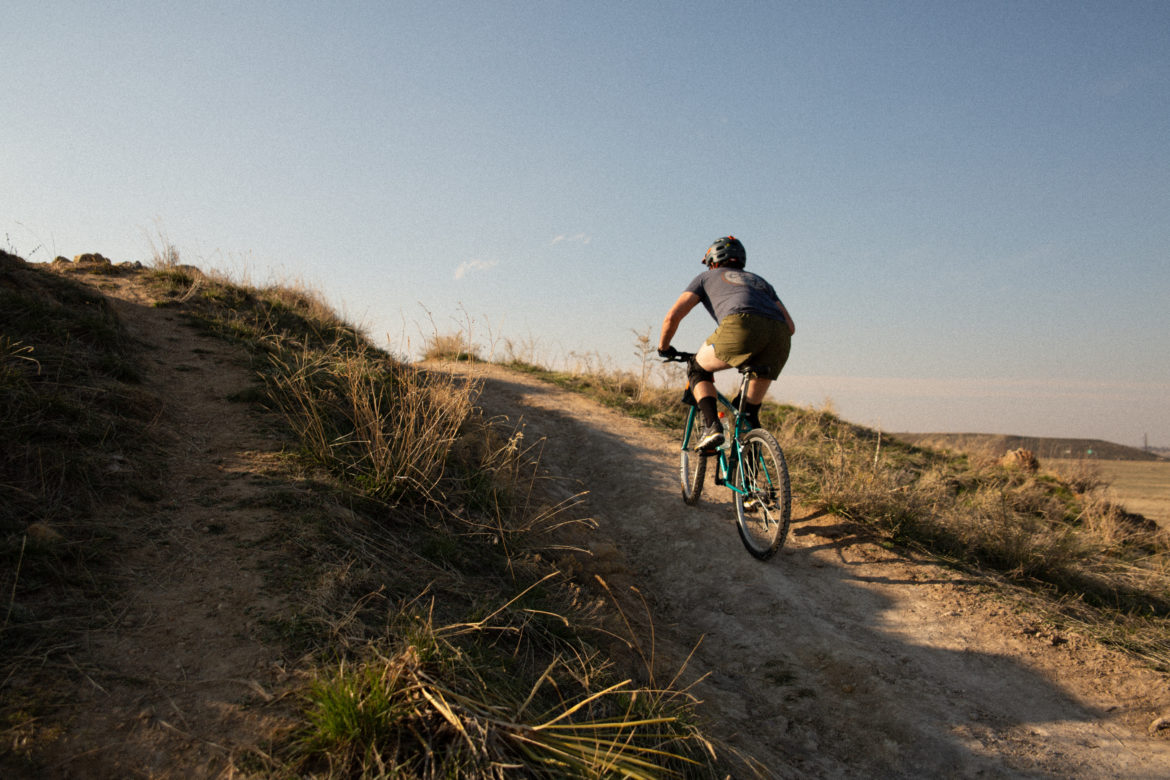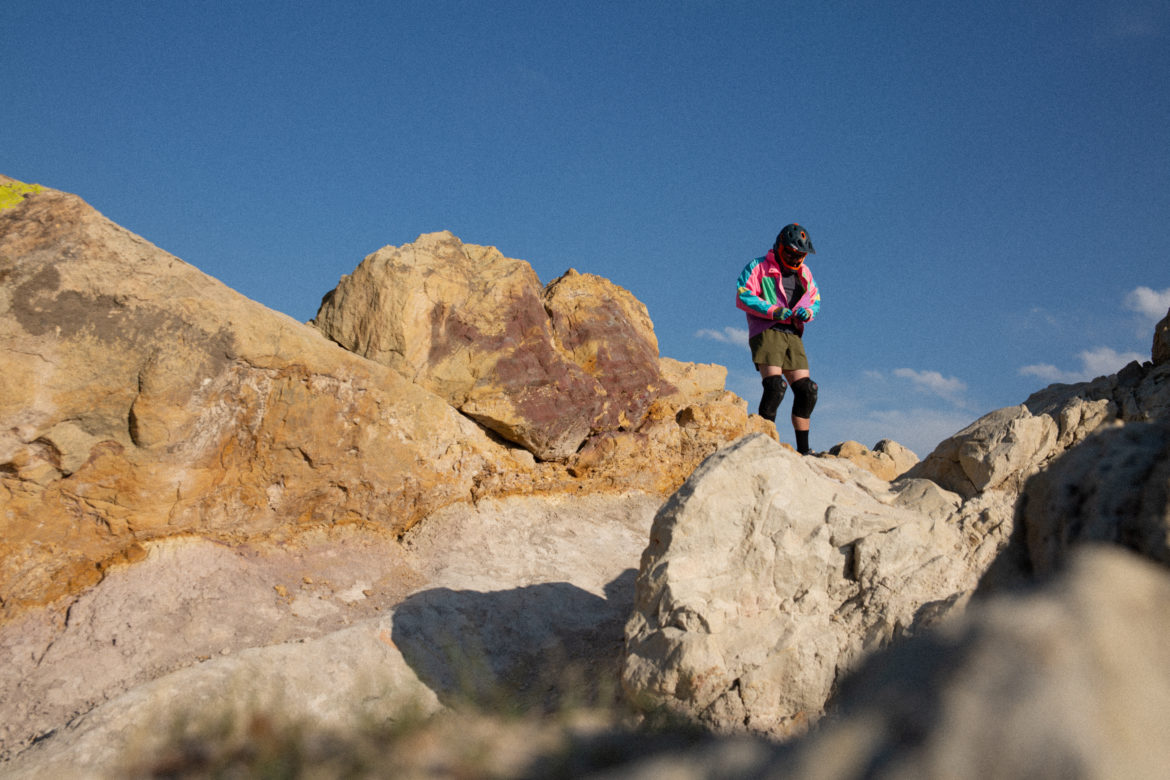
One thing we hear quite often from readers is that we review bikes that are too expensive and out of reach for many riders. With that in mind, I decided to test an early 1990s Gary Fisher Tassajara that cost me $50 off of Craigslist. My fiancé Hannah uses the bike mostly as a commuter, and a way to ride to local breweries.
About the bike

From the earliest catalog I could find, published in 1993, Gary Fisher describes the Tassajara as a dependable, affordable, all-around mountain bike. The name is derived from “either a valley in Northern California that hosted one of Gary’s favorite races, a Zen monastery, or wheat bread. Hey this is California. Take your pick.” One of mountain biking’s pioneers clearly took things lightly.
We picked up the Tassajara because of the Gary Fisher namesake, knowing that even at more 25 years old, it would still make a solid way to get around the city, or even a few local trails. And it has been. The chromoly steel frame is in spectacular shape, aside from paint rubs and scratches, and all of the components are original except the saddle and tires.
From what I can tell, the size medium, 17.5-inch-framed Tassajara has short, 419mm chainstays, a fairly steep 74° seat angle, and a very steep 71° head tube angle. Reach is surprisingly around 430mm, according to my measurements, but the effective top top tube is short, at 520mm. The wheelbase measures a sketchy 1022mm. Note that some of these measurements are imprecise.
The Tassajara comes with a Shimano groupset, and a 3×7 drivetrain with 392% range. A little bit smaller than the mountain bikes of today. Front and rear cantilever rim brakes provide stopping power. All in all, the fully rigid chromoly bike weighs 28lbs.
Tackling the trail on the Tassajara

Since we have been on stay-at-home orders in Colorado, I rode to a close-by neighborhood trail with a steep rise, and a fall-line style descent, with loose rocks and a winding line all the way down. Legal? Yes. Safe? Kind of.
Initially, I had some trouble with the responsiveness of the Shimano Altus shifter because it is almost thirty years old and hasn’t had a decent tune-up in years. I found that I needed to push my thumb into the downshift lever so hard that it felt like my knuckles were going to snap. Honestly, I’m not even sure if the cables or housing have ever been replaced, since they still have Shimano labeling on them.
But, once I was in the right gear at the base of the climb, I started to glide gently upward like a plastic grocery bag caught in the wind. The short effective top tube and 110mm stem made it easy to drape my carcass over the front wheel for a solid climbing position with plentiful front wheel tracking. I will say that I felt a little cramped in the cockpit.
The steel frame does have some drawbacks, as do the 26-inch wheels with tubes. They all add weight, and being that the axle spec is 100/135mm quick release, buyers will have a tough time finding a decent set of carbon wheels to lighten the rotational weight.
Once the hill pointed down though, it was game on, and I was ready to see what the Tassjara could do. I hit the quick release seat clamp and twisted and pushed the seat post down until it stopped. With a quick couple of upshifts, the Tassajara and I were ready to battle the trail.
The first thing I noticed was how agile the Tassajara was, aided by the 71° head angle, and snappy 570mm wide handlebars. Surprisingly, I felt more relaxed than I thought I would have on the bike as I started controlling my descent. My confidence increased as I got lower down the trail, and it felt as smooth as a pad of butter sliding down a mound of hot mashed potatoes.

The upside of the steel frame is that the bike mitigates vibration and the rotational mass creates a pretty stable feel at speed. If I had one major complaint, it’s the previous buyer made a very poor tire choice when he bought a new set. The Continental Town and Country tires, measuring 26×1.9-inches create too small and slippery a footprint for riding this bike down trails with loose over hardpack conditions.

If I had one other complaint, even though they provided decent stopping power, it would be that the cantilever brakes screamed like a rabid werewolf whenever I pulled them in toward the handlebars.
Who’s it for?

All in all, I have to say that with a few modifications and a rider with the right skillset, the Gary Fisher Tassajara is still a legitimate mountain bike.
To compliment that statement, I would recommend this bike to someone who is comfortable riding bikes of all kinds on dirt trails, otherwise there are far more progressive mountain bikes that will make the experience more comfortable for beginners. This is kind of a bummer because it comes with a killer price tag. For others though, the Tassajara is an impressive townie, and that’s where the Town and Country tires come in handy.
Closing thoughts

I had not ridden the Tassajara yet, even though Hannah has had it around for a few years. I’ll be honest, I was a little skeptical about riding it up or down a trail, but I cleaned a steep hill going up, and survived a little fall-line trail on the other side. The Tassajara feels pretty stable when it gets moving, the steel frame smooths things out nicely, and there is obviously a ton of value here. Stay tuned to Singletracks, and maybe we’ll review it in another 30 years.
Happy April Fools Day.































